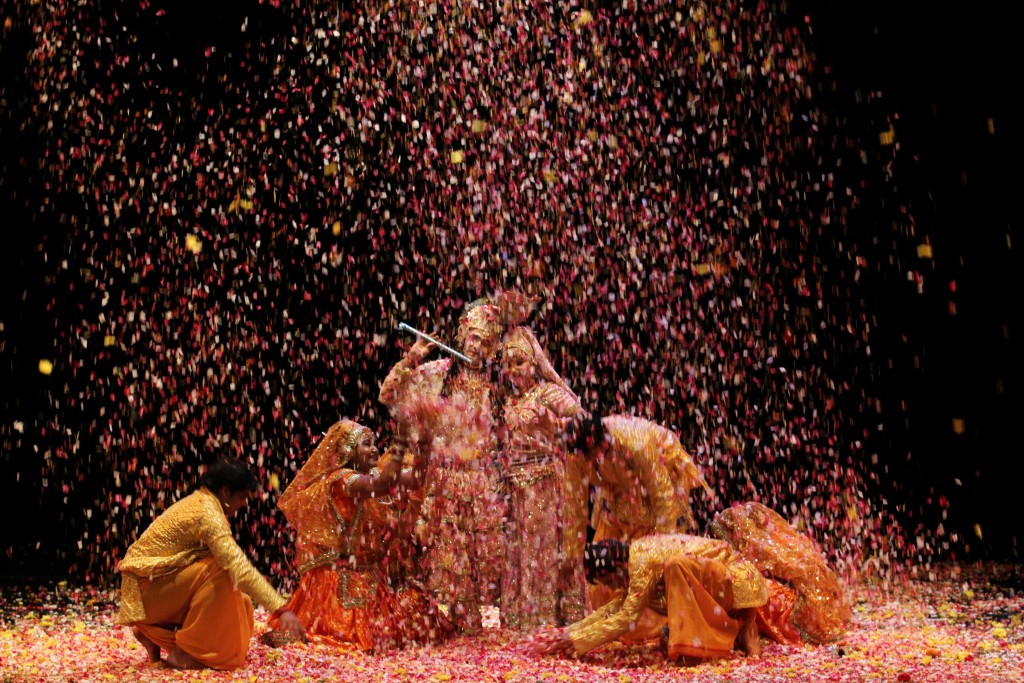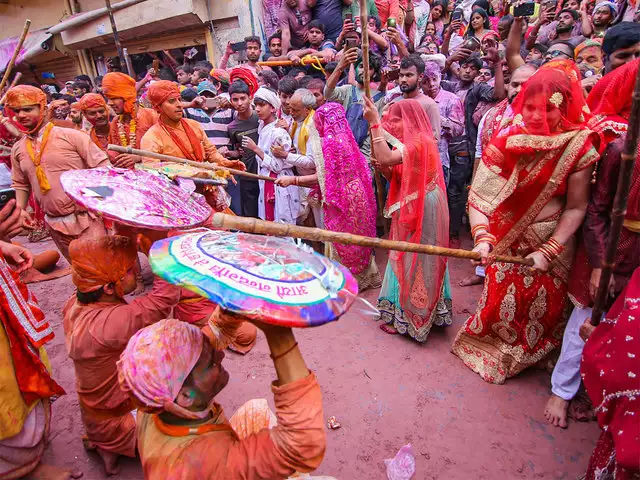

Charkula dance is a traditional folk dance that originated in the Braj region of Uttar Pradesh, India. It is usually performed by women and is associated with the worship of the Hindu deity Krishna.The dance is typically performed during the festival of Holi, which is celebrated in the spring. The performers wear colorful traditional attire and carry a large pyramid-shaped structure called a charkula, which is adorned with dozens of lighted oil lamps. The charkula is balanced on the performer’s head as she dances to the beat of a dholak, a type of drum.The movements in Charkula dance are graceful and energetic, and involve a lot of spinning and circular motions. The dancers often perform in groups, creating intricate patterns and formations as they move. Charkula dance has been passed down through generations and is an important part of the cultural heritage of the Braj region. It is not only a form of entertainment but also a way to pay homage to the deities and celebrate the joy of life.

Phoolon ki Holi is a unique and vibrant celebration that takes place in the city of Vrindavan, located in the northern Indian state of Uttar Pradesh. It is a variation of the Hindu festival of Holi, which is celebrated throughout India and other parts of the world. During Phoolon ki Holi, instead of throwing colored powder, people throw flower petals at each other. The celebration takes place in the historic Banke Bihari Temple, which is dedicated to Lord Krishna. The temple is adorned with flowers and the air is filled with the fragrance of various flowers. The celebration is said to have originated from the tradition of Lord Krishna playing Holi with his beloved Radha and other Gopis (cowherd girls) in the forests of Vrindavan. The use of flowers is believed to be a tribute to the natural beauty of the forests. During Phoolon ki Holi, the temple priests and devotees shower each other with flower petals and sing devotional songs in praise of Lord Krishna. The atmosphere is filled with joy, happiness, and a sense of unity and brotherhood. The celebration of Phoolon ki Holi is not only a tribute to Lord Krishna but also a way to promote love, harmony, and peace among people of all backgrounds and religions. It is a unique and beautiful expression of India’s rich cultural heritage and traditions.

Barsana ki Lathmar Holi is a unique celebration of the Hindu festival of Holi, which takes place in the small town of Barsana in Uttar Pradesh, India. The festival is named after Barsana, which is said to be the birthplace of Radha, Lord Krishna’s beloved.During the festival, men from the nearby town of Nandgaon visit Barsana, where they are greeted by the local women with sticks or “lathis” as they try to enter the town. The men try to protect themselves with shields, but the women often manage to strike them with their sticks. The men, in turn, try to drench the women with colored water.The Lathmar Holi celebration usually takes place a few days before the actual Holi festival, and is a symbolic reenactment of the mythological story of Lord Krishna and Radha. According to the legend, Lord Krishna visited Barsana and teased Radha and her friends, who chased him away with sticks. The Lathmar Holi celebration has become a popular tourist attraction, and draws visitors from all over India and around the world. It is a vibrant and colorful celebration of love, and reflects the rich cultural heritage of India.

Barsana ki Lathmar Holi is a unique celebration of the Hindu festival of Holi, which takes place in the small town of Barsana in Uttar Pradesh, India. The festival is named after Barsana, which is said to be the birthplace of Radha, Lord Krishna’s beloved.During the festival, men from the nearby town of Nandgaon visit Barsana, where they are greeted by the local women with sticks or “lathis” as they try to enter the town. The men try to protect themselves with shields, but the women often manage to strike them with their sticks. The men, in turn, try to drench the women with colored water.The Lathmar Holi celebration usually takes place a few days before the actual Holi festival, and is a symbolic reenactment of the mythological story of Lord Krishna and Radha. According to the legend, Lord Krishna visited Barsana and teased Radha and her friends, who chased him away with sticks. The Lathmar Holi celebration has become a popular tourist attraction, and draws visitors from all over India and around the world. It is a vibrant and colorful celebration of love, and reflects the rich cultural heritage of India.

Mayur dance is also a traditional dance form from the Braj region of northern India, which includes parts of Uttar Pradesh and Rajasthan. This dance form is also known as Peacock dance, and it is named after the peacock, which is considered a sacred bird in Hindu mythology and is associated with the god Krishna. The Mayur dance of the Braj region is performed by both men and women, and is characterized by its graceful movements and colorful costumes. The dancers wear brightly colored costumes and headdresses resembling peacock feathers, and their movements are accompanied by the sound of traditional instruments such as the dhol, nagara, and bansuri (flute). The dance tells the story of Lord Krishna’s playful antics with the gopis (cowherd girls) of Vrindavan, and is typically performed during the festival of Holi, which is celebrated in the spring. The dancers perform intricate footwork, spins, and jumps, and use hand gestures and facial expressions to convey the emotions of the story. Mayur dance from the Braj region is a popular cultural attraction and is performed in many parts of India during the festival of Holi. It is a beautiful and vibrant expression of India’s rich cultural heritage and traditions, and is enjoyed by people of all ages and backgrounds.
